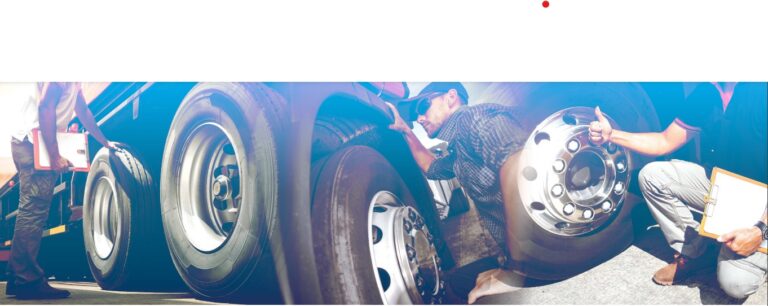Department of Transportation (DOT) inspections are often like a visit to the dentist: The best possible news is that there’s no bad news.
That’s a perception Director of Roadside Inspection Program for the Commercial Vehicle Safety Alliance (CVSA) Kerri Wirachowski wants to change.
“A lot of the industry doesn’t even really know what CVSA is,” she said. “They think we’re the government.”
The CVSA certainly works with the government, she says, providing training to law enforcement groups and individuals on how to conduct inspections. The organization also develops the inspection criteria used by the inspectors.
For Wirachowski, however, the purpose of CVSA is all about the sharing of knowledge. That concept was the basis for the 40-hour industry course she instituted in 2018.
“I teach (trucking industry professionals) the same course that the inspectors take to learn how to identify violations and apply the out-of-service criteria,” she explained. “Carrier executives come to a lot of them, and then comes fleet supervisors, and then back-office people that are in charge of hours-of-service (HOS) or CDL requirements.”
Wirachowski discussed some of the more common violations inspectors find, along with some solutions that carriers can follow to improve pass rates. She began with something many people love to hate — electronic logging devices (ELDs).
“The ELD has changed the scope of (HOS) logging violations significantly over the last five years,” she remarked. “The No. 1 violation in the old paper logs was failing to update duty status. Those have certainly decreased, because an ELD is always up to date.”
At first, ELDs were problematic because drivers didn’t know how to transfer duty status records from truck to truck, or they did not have required documentation such as a user manual or a malfunction sheet for their device.
“Everything’s allowed to be electronic now, so a lot of the ELD vendors programed everything into the device — but the driver still had no idea,” Wirachowski explained.
The problem was — and still is — driver training, she said.
“You train (the driver) on something and then when he gets stopped, he’s nervous so he’s not working at his full capacity anyway, right?” she noted. “And then when the inspector starts, asking for him to do this, this, this, this and this — if the driver’s not functional at it, it just goes sideways.”
Wirachowski pointed out that people tend to learn things that are used often, and that drivers may be stopped for an inspection weeks or months after being shown how to access ELD information.
“The inspector doesn’t need to train the driver on how to use the ELD,” she said, noting that there are more than 500 ELD devices listed in the FMCSA registry. “There’s no way an inspector is going to be savvy on all 500, right? It’s not possible.”
Another HOS violation that has increased with the use of ELDs is log falsification, something that many drivers say was a common practice with paper logbooks.
“It’s easier to find this with an ELD, and inspectors can see this,” she said.
Of course, roadside inspections don’t only focus on drivers. It’s vital that tractor-trailers be in safe operating condition.
Tire violations is one area that’s on the rise in vehicle inspections.
“The reason is that a lot of the states are starting to use technology to detect underinflated tires,” Wirachowski explained. “Some of them have thermal capabilities that can ‘see’ underinflated tires and bring them in for inspection.”
Carriers are fighting back with technology.
“There is a huge increase of tire inflation pressure systems on trailers,” Wirachowski remarked. “And now, you’ve got the monitoring system on the truck that drivers can see, and there are tractors out there that companies can order that have the self-check, so the driver can just hit the switch and go around and see the lights flashing.”
Brakes are a big concern for CVSA, which conducts a scheduled Brake Safety Week each year, along with unannounced 24-hour brake inspection blitzes.
Automatic slack adjusters are the standard today, but have they made a difference?
“When automatic slack adjusters came out, they had the mindset that you can just put it on and forget about it; it’s gonna take care of itself. Well, that’s not true,” Wirachowski said.
Some carriers provide push-rod stroke indicator devices that make it easier for drivers to observe whether the brakes are in adjustment. However, Wirachowski said, many drivers she talks to can’t tell her the size of the brake chambers on their trucks or what the push-rod travel should be. They aren’t checking at all, she said.
Disc brakes eliminate the need for slack adjusters but come with problems of their own.
“I remember when they first came out,” she explained. “Those rotors were supposed to outlive the truck in some cases, but now I’ve got hundreds of pictures of cracked rotors. They’ve basically overheated so many times that they just split apart.”
Wirachowski believes more attention to these items needs to occur during the PM cycle.
“The motor carriers that I talk to are basically doing an annual inspection every time the truck is in for maintenance,” she acknowledged. “Anything less than that and you’re doing yourself a disservice.”
One strategy to improve a carrier’s inspection passage rate is driver motivation. Carriers that offer a bonus to drivers who achieve clean DOT inspections are finding more success at roadside inspections, Wirachowski noted. However, some drivers are still slacking off on pre-trip and daily inspections.
“In the U.S., they don’t have to do an inspection report unless they find a defect,” she said. “In Canada, they still produce the trip inspection but 95% have a big ‘OK’ written across it.”
Whether the driver produces an inspection report or verbally confirms it has been done, DOT inspectors often find defects that the driver didn’t write up.
Truck paperwork is another problem area, according to Wirachowski.
“Get some semblance of order,” she advised fleet managers and drivers. “When the carrier gives you new stuff, get rid of the old stuff.”
Mostly, Wirachowski wants carriers to use CVSA as a resource. The CVSA website, cvsa.org contains information on upcoming webinars and other training opportunities.
Cliff Abbott is an experienced commercial vehicle driver and owner-operator who still holds a CDL in his home state of Alabama. In nearly 40 years in trucking, he’s been an instructor and trainer and has managed safety and recruiting operations for several carriers. Having never lost his love of the road, Cliff has written a book and hundreds of songs and has been writing for The Trucker for more than a decade.















